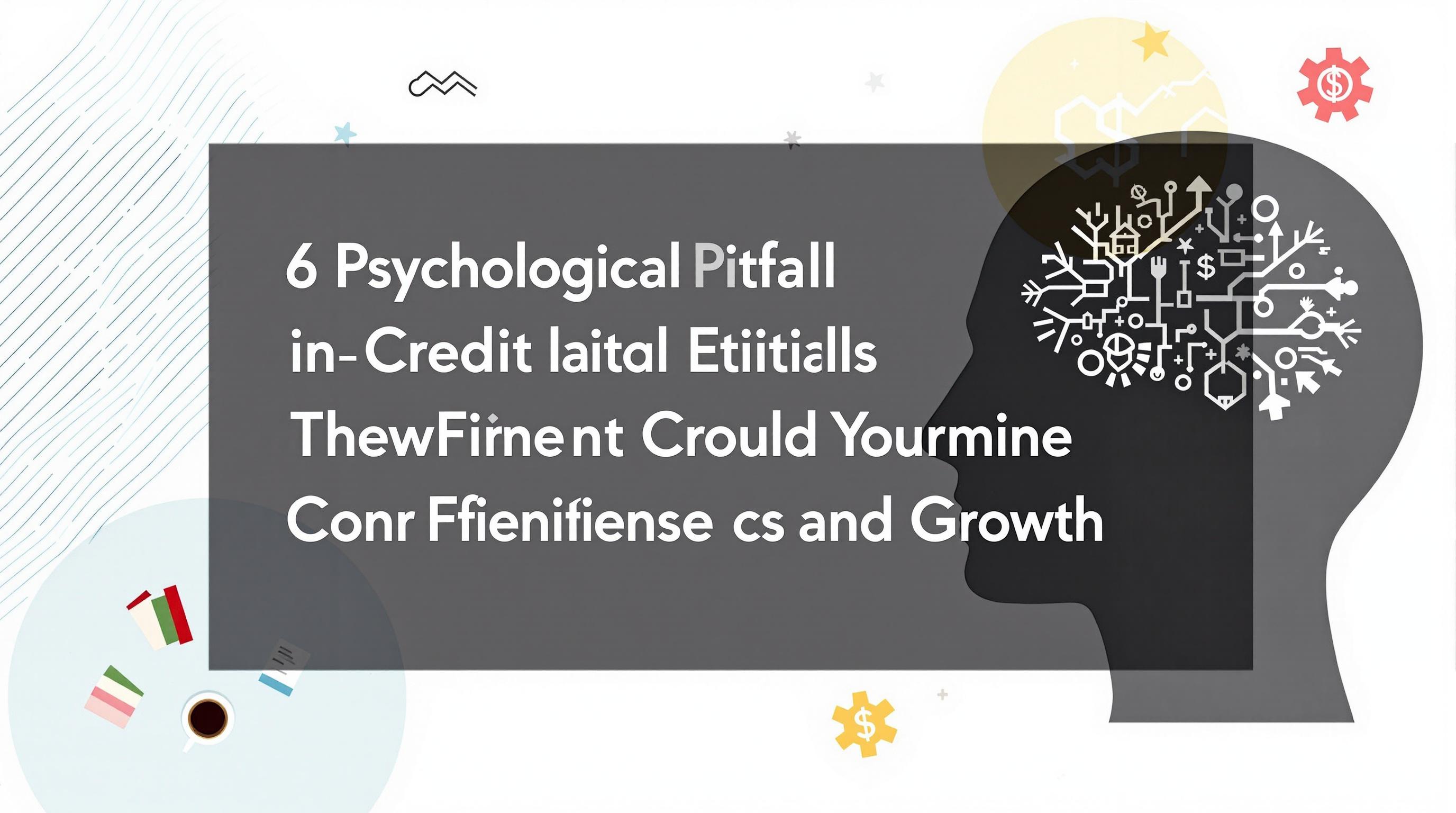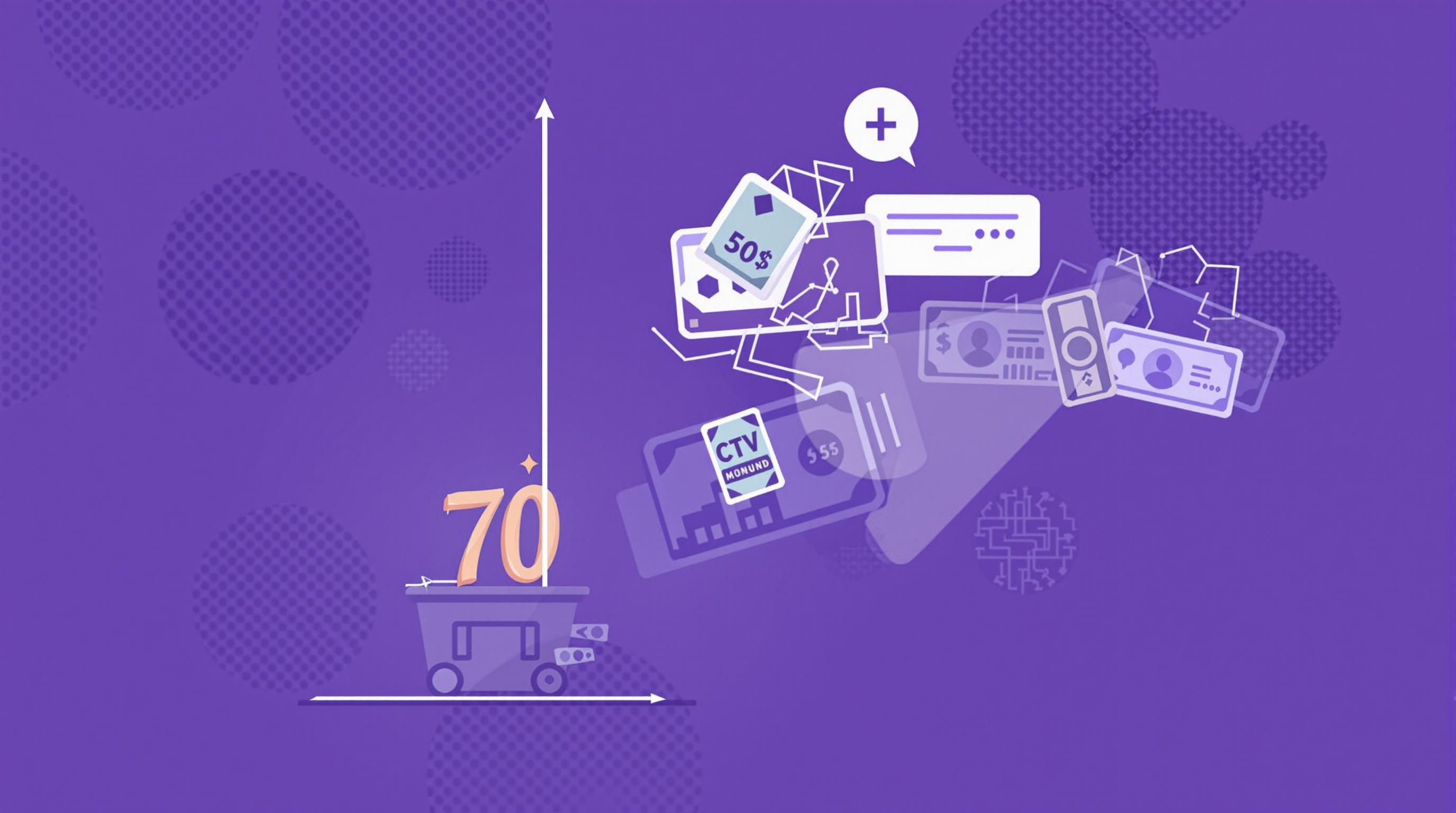Related Articles
- Top 6 Niche Credit Cards from the Past Five Years That Exploit Unseen Reward Loopholes
- Unmasking the Silent Influence of Social Media Challenges on Long-Term Financial Behavior and Credit Recovery
- How Microcredit Dynamics in Remote Communities Are Redefining Access and Trust Beyond Traditional Credit Metrics
- How Cultural Attitudes Shape Collective Borrowing Habits and Their Impact on Financial Unification Strategies
- Top 5 Under-the-Radar Digital Loan Services Launched Since 2019 That Are Disrupting Traditional Borrowing Norms
- Top 6 Cutting-Edge Financial Wellness Platforms Redefining Debt Recovery Tools Released Since 2019
6 Psychological Pitfalls in Credit Utilization That Can Undermine Your Financial Confidence and Growth
6 Psychological Pitfalls in Credit Utilization That Can Undermine Your Financial Confidence and Growth
6 Psychological Pitfalls in Credit Utilization That Can Undermine Your Financial Confidence and Growth
1. Overestimating Available Credit
It’s tempting to think your credit limit equals disposable cash. This mental shortcut often leads to overspending. When balances near the limit, your credit utilization ratio spikes, damaging your credit score and financial standing.
Psychologically, the sense of available credit can override rational budgeting. People see the credit line as “free money,” ignoring future repayment obligations. This misperception sabotages confidence when bills arrive, sparking stress and financial paralysis.
Understanding that credit is a borrowed resource, not income, is critical. Treat it like a budget boundary rather than a wealth measure. Awareness helps maintain credit health and long-term financial growth.
2. Misjudging the Impact of Utilization on Credit Scores
Many underestimate how much credit utilization influences credit scores. Utilizing over 30% of your credit can cause scores to dip significantly (FICO, 2023). This misjudgment erodes confidence when unexpected score drops occur.
Psychologically, ignorance breeds anxiety and distrust in financial systems. Consumers feel blindsided by score changes they did not anticipate, questioning their ability to manage credit. This emotional toll can discourage proactive credit management.
Learning the credit utilization formula and monitoring it regularly empowers users. Transparency breeds trust in the system and fosters a growth mindset, vital for long-term financial resilience.
3. Ignoring Small Balances and Their Psychological Weight
Small credit card balances often go unnoticed but cumulatively exert psychological pressure. The nagging feeling of carrying debt, no matter how modest, contributes to chronic financial stress.
This ongoing stress reduces cognitive resources for budgeting and decision-making, amplifying the risk of poor spending habits. People either avoid checking statements or impulsively pay more than required, disrupting cash flow.
A disciplined approach to paying off small balances monthly minimizes this mental burden. It cultivates a sense of control that promotes financial confidence and growth.
4. Emotional Spending as a Response to Credit Limits
Emotions drive spending behavior more than logic. When individuals face credit limits, feelings of scarcity may paradoxically trigger spending as a form of immediate gratification or stress relief.
This emotional spending worsens credit utilization ratios rapidly, creating a negative feedback loop. As utilization climbs, feelings of guilt and anxiety grow, undermining financial confidence and decision-making clarity.
Recognizing emotional triggers is the first step in breaking this cycle. Techniques like budgeting frameworks and psychological mindfulness can redirect spending impulses into positive financial behaviors.
5. Underestimating the Role of Credit Utilization in Loan Approvals
Credit utilization is not only a score factor but a red flag for lenders. High utilization signals risk, often resulting in denied loans or higher interest rates. Many borrowers overlook this connection until facing rejections.
This surprise shocks confidence, causing frustration and sometimes giving up on valuable credit-building opportunities. The psychological aftermath can stall financial progress indefinitely.
Educating oneself about lender criteria helps align credit behavior with approval standards. This proactive mindset increases chances of loan success and long-term financial growth.
6. Neglecting the Psychological Benefits of Low Credit Utilization
Low credit utilization offers more than score improvements; it instills peace of mind. The psychological benefit comes from the sense of financial buffer and controlled spending habits.
This calm enhances cognitive bandwidth for strategic financial planning without the constant burden of debt stress. It encourages taking calculated risks that fuel growth rather than fear-driven retreat.
Prioritizing low utilization cultivates both external (score) and internal (confidence) assets, creating a virtuous cycle of financial empowerment.
7. Overreliance on Credit Utilization as a Sole Metric
Credit utilization is crucial but not the only credit health factor. Overemphasis on it leads to tunnel vision, ignoring payment history, account age, and credit mix. This incomplete focus can stunt progress.
Such narrow thinking breeds anxiety when expected results don’t materialize, despite low utilization. It also encourages risky behavior, like opening unnecessary accounts to decrease utilization ratios artificially.
Balanced awareness of multiple credit metrics is psychologically grounding and strategically wise. It broadens goals and reduces frustration in credit management.
8. Procrastination Triggered by Credit Anxiety
Fear of confronting credit card balances and utilization statements can prompt procrastination. This delay allows debt to grow unchecked, exacerbating financial problems over time.
Psychologically, procrastination feeds on stress and avoidance loops. The longer the avoidance, the heavier the emotional burden, creating a downward spiral that undermines confidence and financial stability.
Addressing credit anxieties head-on with small, manageable steps reverses this pattern. Routine monitoring rituals help break avoidance, build discipline, and enhance growth opportunities.
9. False Security from High Credit Limits
High credit limits sometimes give a misplaced sense of security. Consumers equate large limits with financial strength and fail to treat them as boundaries to respect.
This false confidence fuels higher spending and neglect of prudent credit practices. When repayment difficulties arise, this illusion shatters, damaging trust in one’s financial judgment.
Understanding that limits are risk thresholds—not available wealth—is vital. Real financial confidence comes from responsible usage within those limits.
10. Ignoring the Long-Term Behavioral Impact of Credit Utilization Habits
Credit utilization patterns embed habits that influence lifelong financial behavior. Short-term mismanagement can harden into chronic financial stress and poor decision-making.
This entrenched behavior undermines growth by limiting access to cost-effective credit and increasing reliance on costly borrowing. Psychologically, it creates a defeatist attitude toward finances.
Early intervention and habit tracking promote sustainable credit use habits. This foundation supports ongoing confidence and scalable financial growth.
References:
FICO. (2023). How Credit Scoring Works. Retrieved from https://www.myfico.com/credit-education/credit-scores
Consumer Financial Protection Bureau. (2022). Managing Debt and Credit. Retrieved from https://www.consumerfinance.gov/consumer-tools/debt-management/




